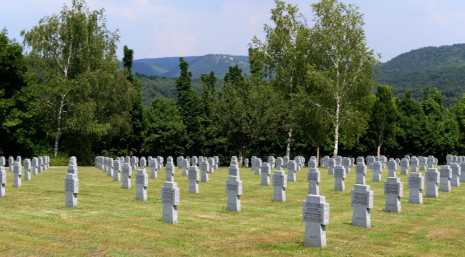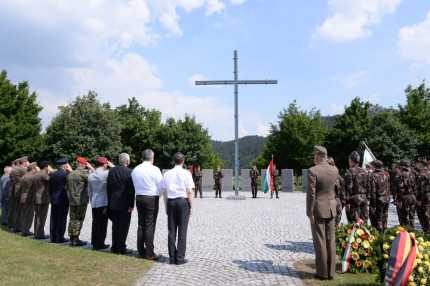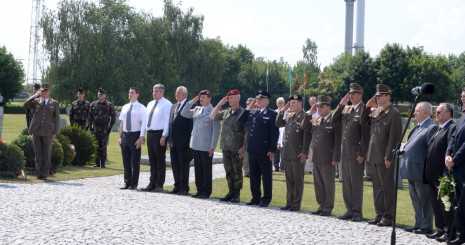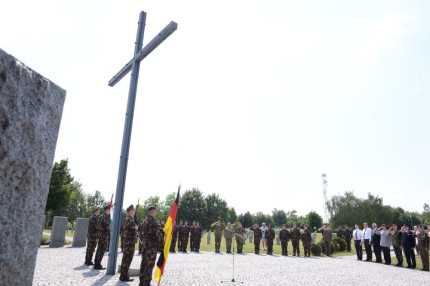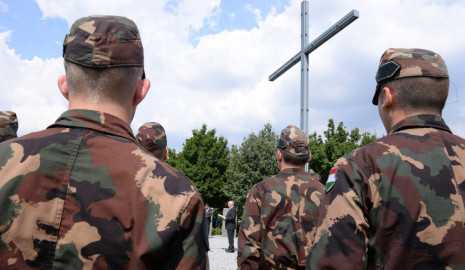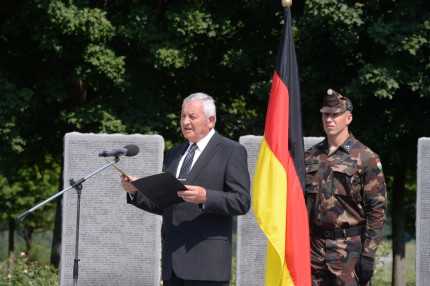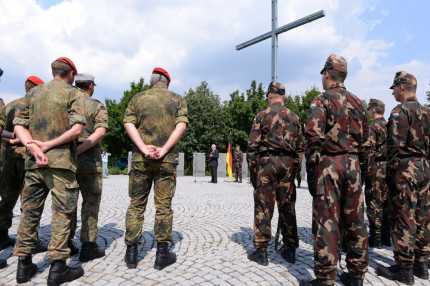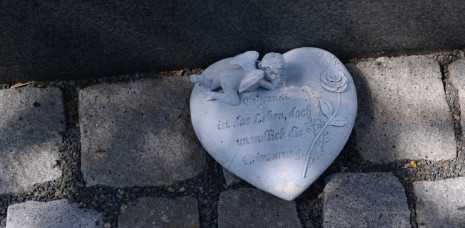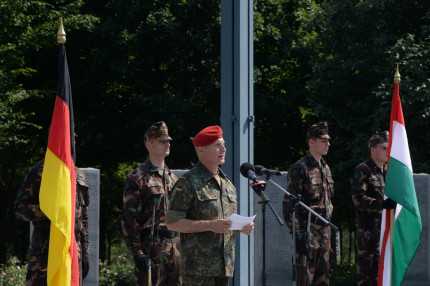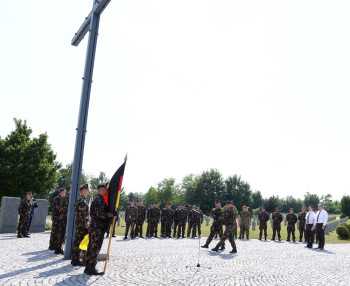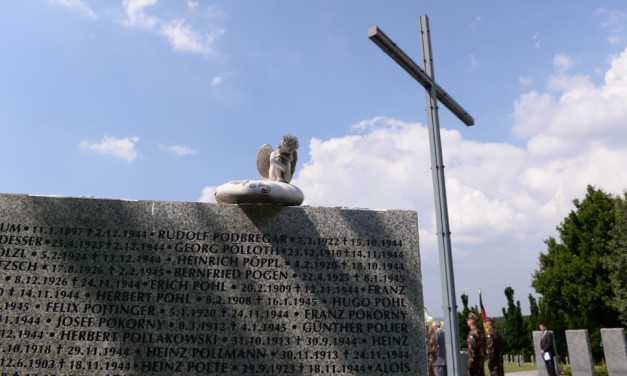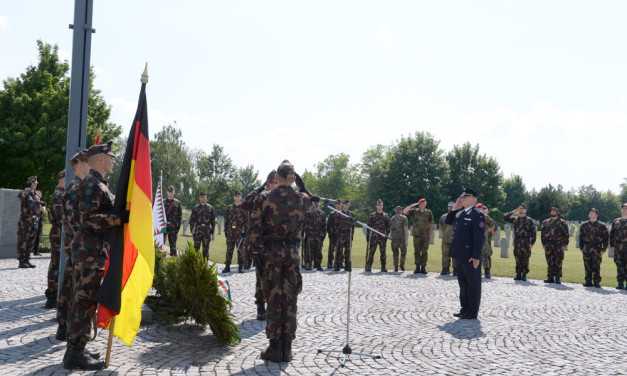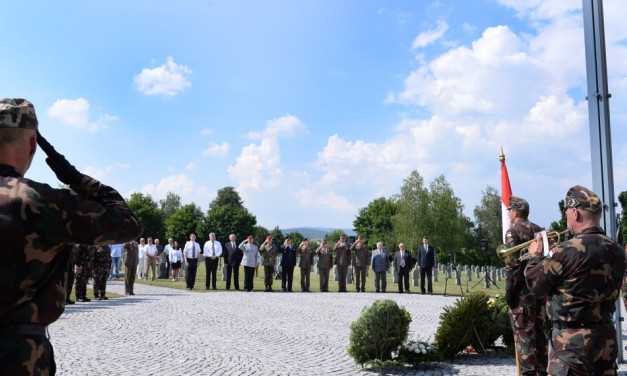„Joint Commemoration Entails Joint Responsibility”
Szöveg: Vivien Takács | 2015. június 19. 9:00For more than a week, Hungarian and German soldiers were jointly restoring the Budaörs military cemetery, the largest graveyard in Hungary where German and Hungarian troops fallen in World War II are buried. The closing ceremony, coupled with wreath-laying and commemoration, was held on Thursday, June 11.
Galéria
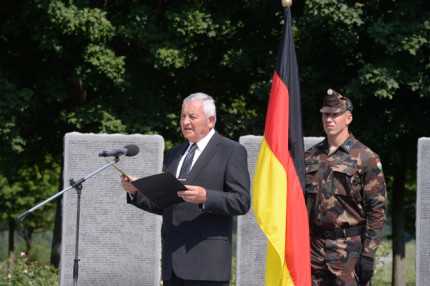
In his speech, Imre Kovács emphasized that the German and Hungarian soldiers working in the Budaörs German–Hungarian military cemetery saved the faded names from oblivion by making them legible, and during their work they also had time to think about their bearers’ fates and about what war itself meant to those resting here.
Lt.-Col. Bernhard Stephan, a staff officer of the 292nd Command Support Battalion (Führungsunterstützungsbataillon), Bavaria emphasized that the centenary of the outbreak of World War I was last year, and this year is the 70th anniversary of the end of World War II. “Since the end of these two bloody wars, preserving and taking care of the graves of soldiers killed in action has not only been a moral obligation for us but also a historical assignment which serves as an eternal warning for politics and society", the lieutenant-colonel emphasized.
The soldiers of the Bavarian 292nd Command Support Battalion (Führungsunterstützungsbataillon) and the Hungarian soldiers participating in a special training program of the Ministry of Defence – officers of the HDF Augmentation and Central Registry Command in charge of war grave care and national defence education – have been working in the cemetery since June 2.
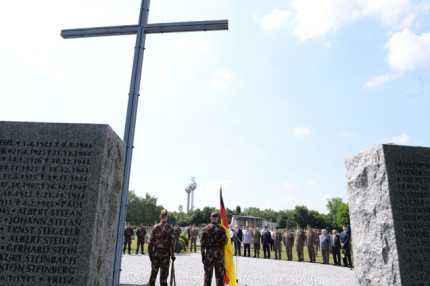
In the Hungarian plot of the cemetery, the soldiers replaced the wooden headboards, prepared concrete footings for them and renewed the inscriptions on the granite cenotaphs that stand in the centre of the cemetery and have more than 5,000 names engraved on them.
After the speeches, Col. Ottó Piros, Acting Commander, HDF vitéz Szurmay Sándor Budapest Garrison Brigade, Col. Ferenc Papp, Deputy Head, MoD Public Relations and War Memorial Service Department and Col. Tibor Vanyur, Commander, HDF Augmentation and Central Registry Command laid wreaths, among others. The commemoration held in the peace park closed with the German military song “I had a comrade" and the Hungarian Last Post.
This cemetery is the final resting place for more than 13,000 German and around 570 Hungarian dead heroes. The construction of Hungary’s largest German–Hungarian WWII military cemetery started in 1996, and in 2002 it was opened as a peace park in the service of reconciliation.
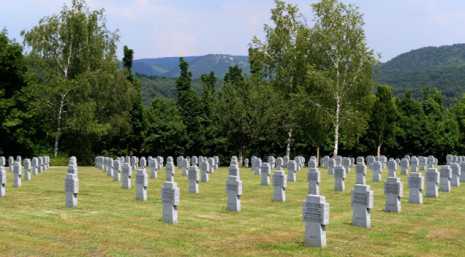
Photo: Mária Krasznai-Nehrebeczky
